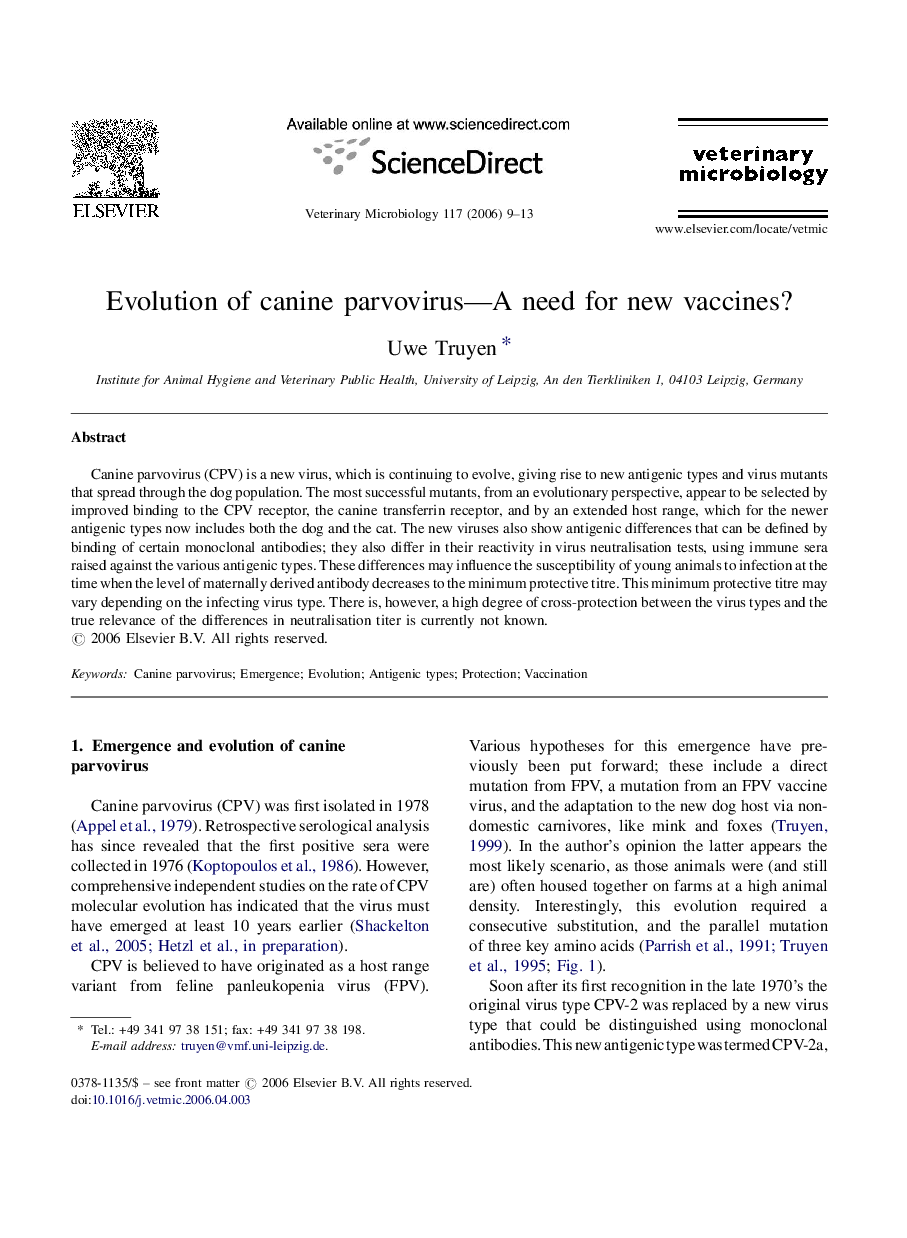| Article ID | Journal | Published Year | Pages | File Type |
|---|---|---|---|---|
| 2469536 | Veterinary Microbiology | 2006 | 5 Pages |
Canine parvovirus (CPV) is a new virus, which is continuing to evolve, giving rise to new antigenic types and virus mutants that spread through the dog population. The most successful mutants, from an evolutionary perspective, appear to be selected by improved binding to the CPV receptor, the canine transferrin receptor, and by an extended host range, which for the newer antigenic types now includes both the dog and the cat. The new viruses also show antigenic differences that can be defined by binding of certain monoclonal antibodies; they also differ in their reactivity in virus neutralisation tests, using immune sera raised against the various antigenic types. These differences may influence the susceptibility of young animals to infection at the time when the level of maternally derived antibody decreases to the minimum protective titre. This minimum protective titre may vary depending on the infecting virus type. There is, however, a high degree of cross-protection between the virus types and the true relevance of the differences in neutralisation titer is currently not known.
